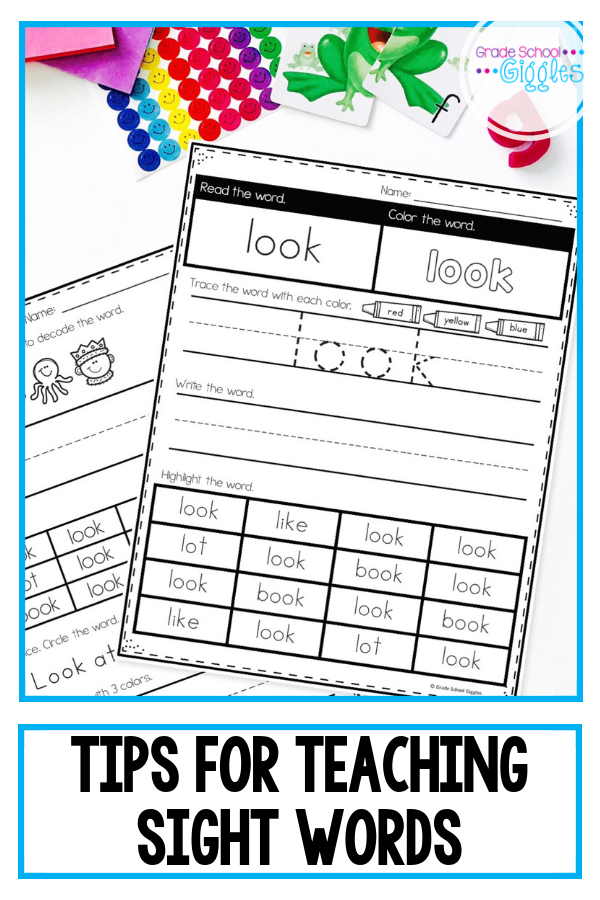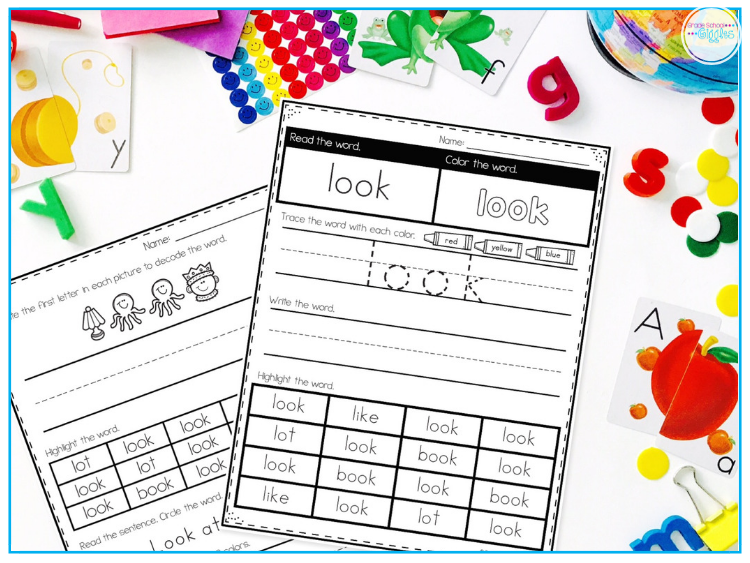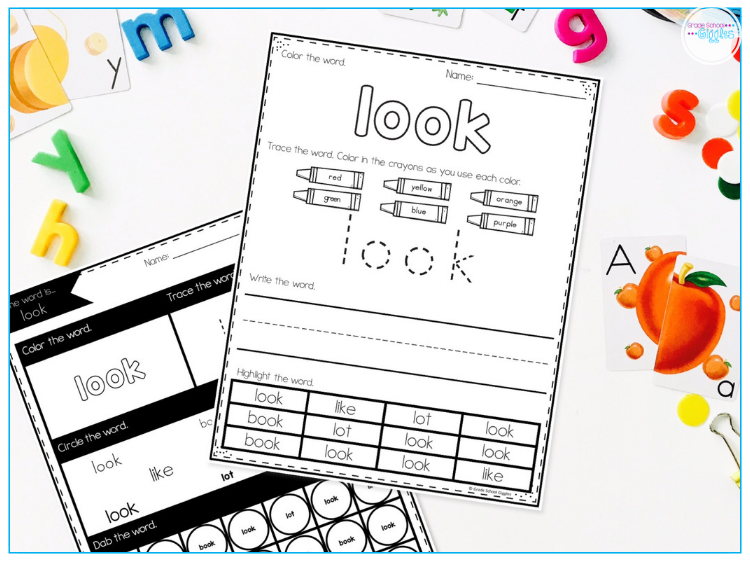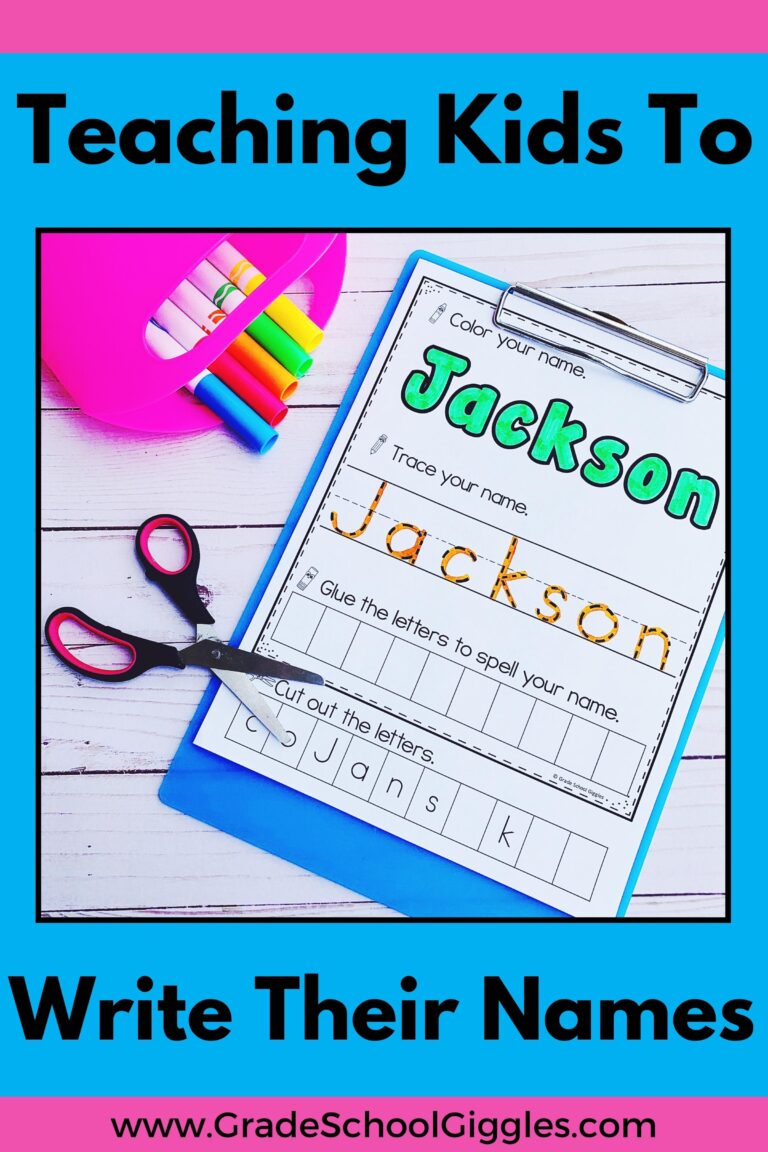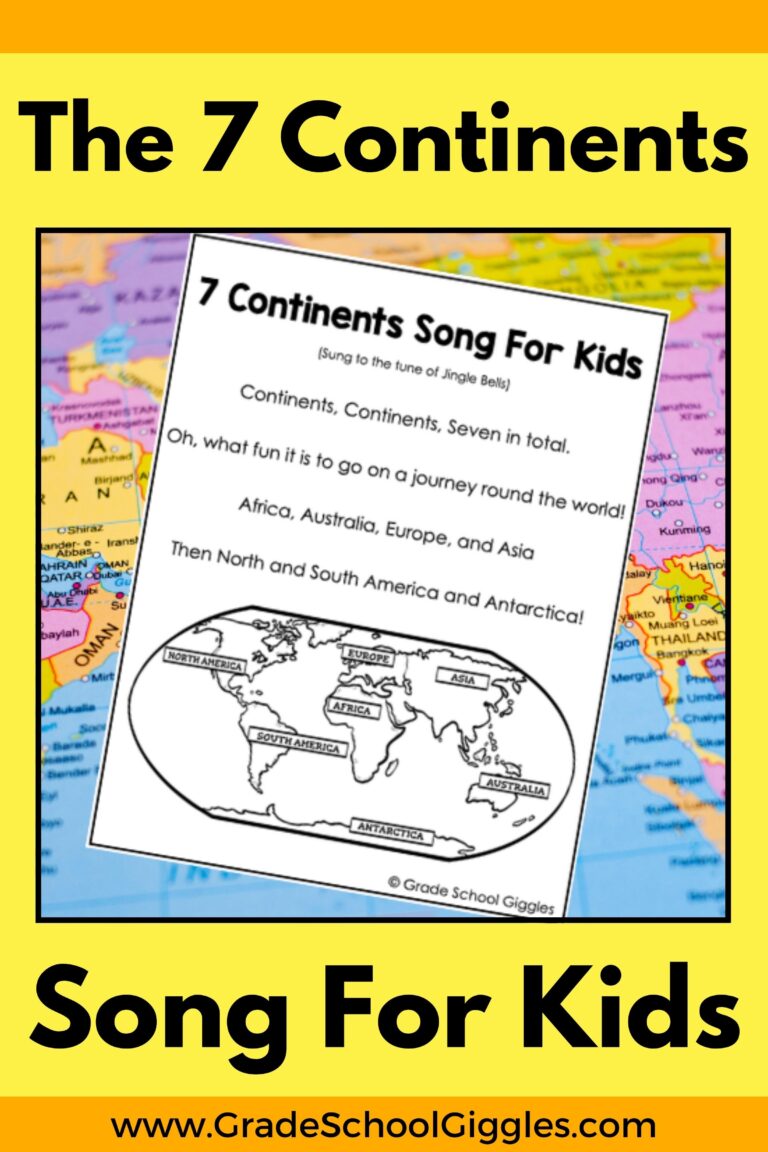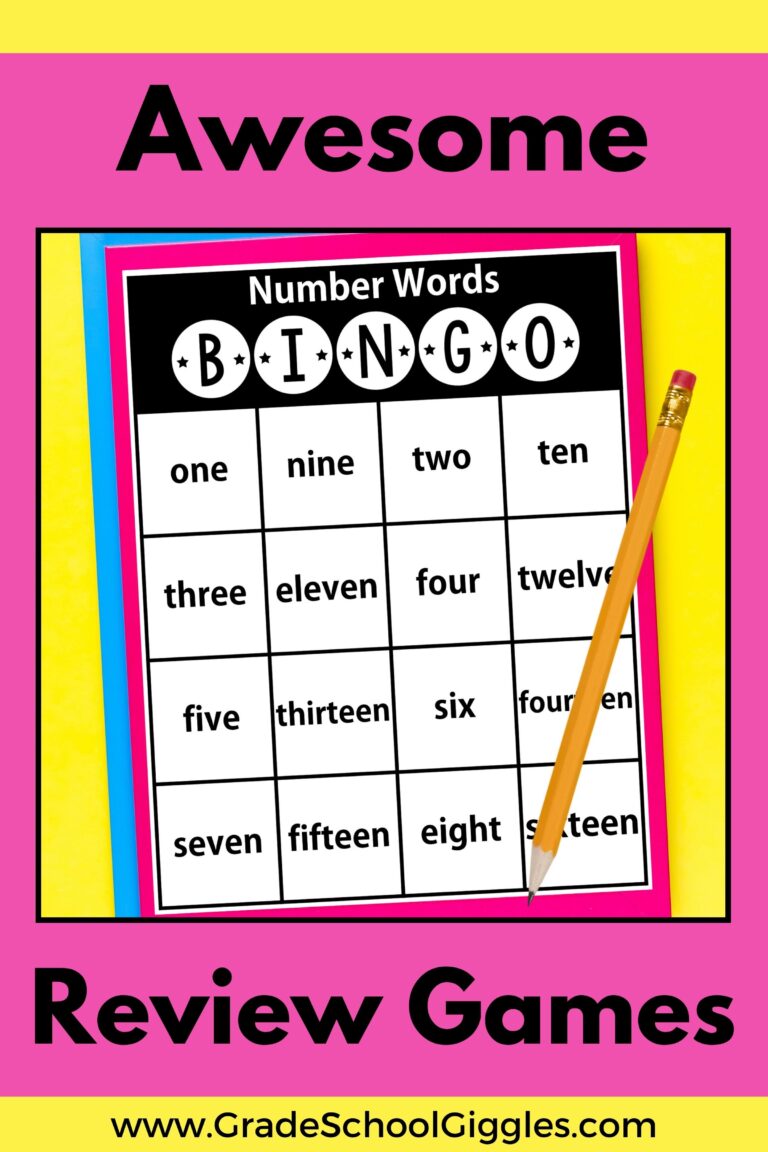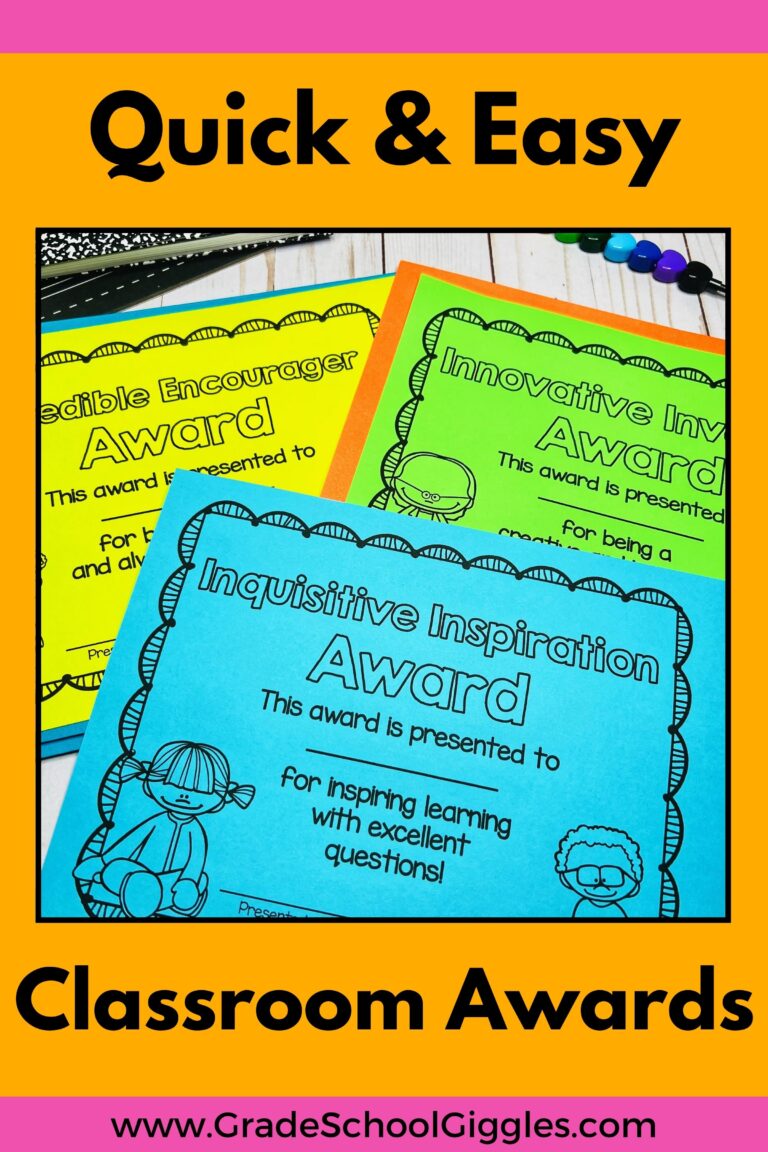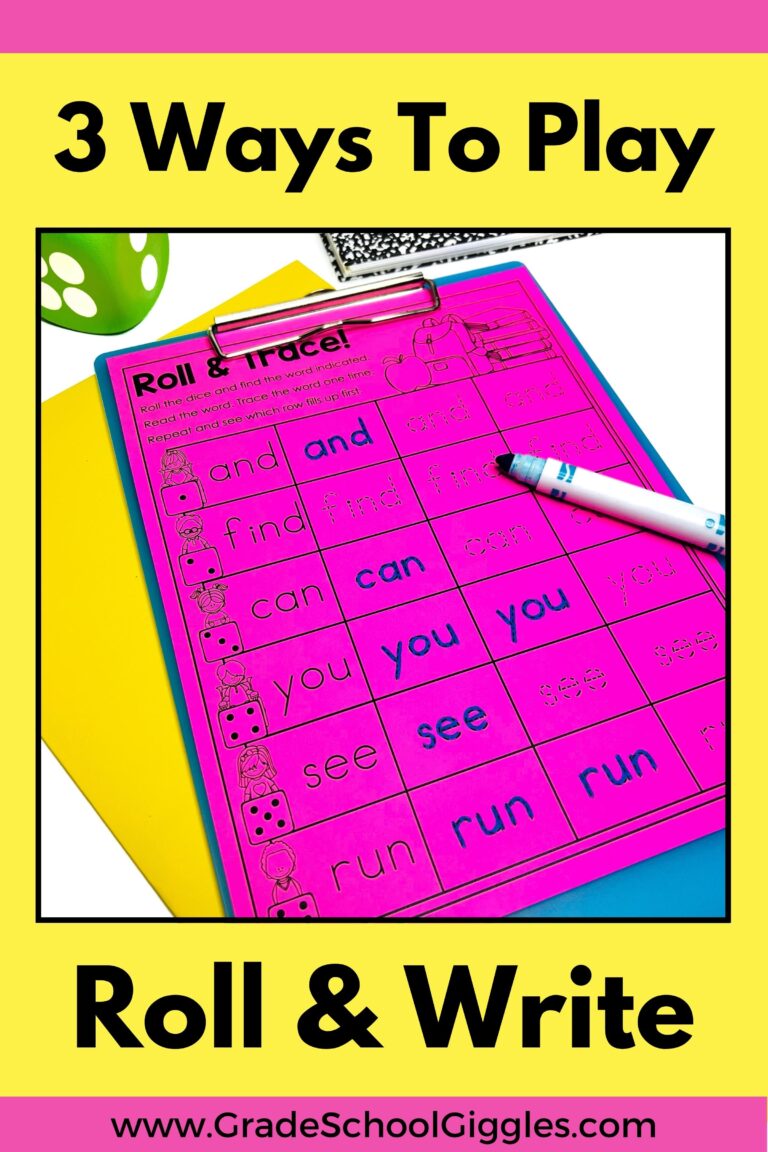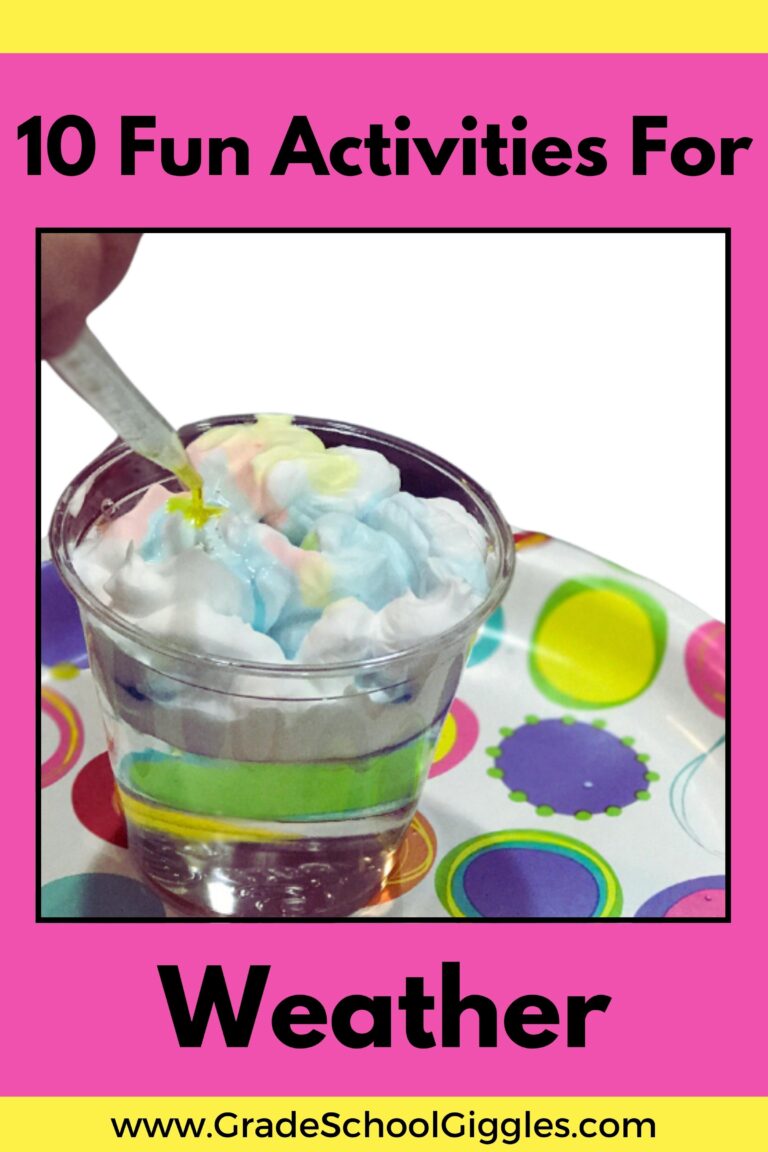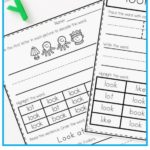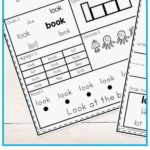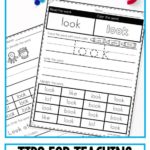Quick and Easy Ideas to Improve How You Teach Sight Words
Sight words are kind of a big deal, AND with good reason. Along with name writing and colors, they’re one of the first things kids learn in school.
Kids need to quickly recognize sight words so they can read and write with fluency because they make up more than half of the material that kids read.
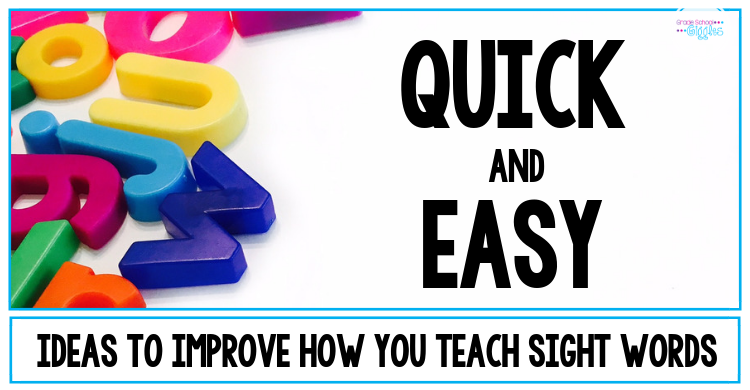
Back when I was teaching as a special education teacher, most of my kiddos had an IEP goal for learning their sight words.
Rarely if ever, did more than two kiddos need the same set of sight words at the same time. Keeping up with who knew which words stressed me out at first.
Then, I developed a system to work smarter, not harder.
Whether you’re teaching in a general education classroom or in a special education setting, sight words are probably one of the things you’re covering. So, let’s chat about quick and easy ways to teach them more efficiently.
Efficient Sight Word Instruction Starts With Assessment
Before you start teaching sight words, it’s really helpful to know what your kiddos already know. You might be thrilled to find out there are words everyone in your class knows. Or, maybe only a handful of kids need some words.
With that knowledge, you can plan what words to introduce to the whole class and what words might be better to introduce in guided reading groups or even one-on-one.
Remember, when you’re assessing sight words, if they can’t read it almost immediately (3-5 seconds max), they haven’t memorized it fully. The goal is automaticity.

Here are a couple of tips for quick and easy sight word assessment.
- Move quickly. If they don’t know it in 3-5 seconds, move on to the next word.
- If you’re going to assess the whole list, don’t assess it all the time. For progress checks and instructional planning, it’s okay to stop assessing once a kid misses 10 words. That’s enough to tell you what to work on.
- Keep your flashcards in the same order as your checklist. (Pro tip: Write your checklist in the same order you will teach the words.) Write numbers on the back to help you quickly put your cards back in order if they get out of order.
- Stay positive. Make it fun. Maybe even let your kid pick a silly voice to read the words in.
You Can Easily Differentiate Your Sight Word Teaching
Differentiation… It’s a buzzword. It’s also a concept I fully believe in. But, sometimes, individualizing our lessons just feels like ONE MORE THING on an already too-full to-do list.
But, using a combined instructional method makes it manageable. Personally, I think it’s important to teach sight words through large-group and small-group direct instruction as well as independent work.
If a lot of kids don’t know the word, teach it to the whole class. If most of the class already knows a word, teach it in your small reading groups.
Direct instruction should focus on 2-5 new words per week. All kids get introduced to these words. And, direct instruction is an important part of getting kids to be able to read and recognize their sight words.

There Are Lots Ways You Can Introduce And Practice Sight Words
Ways like…
- Chanting the words and letters
- Sight word songs and videos
- Using your word wall
- Playing sight word bingo
- Doing sight word read-the-room activities
But, these shouldn’t be the only way your students practice their sight words. And, the 2-5 words you introduce each week shouldn’t be the only words that your students are practicing.
Kids need more practice to truly master their sight words…to the point that they can easily recognize them in context as well as spell and write them. Independent practice provides this extra repetition, and it’s also a great opportunity to get kids engaged by using some fun hands-on activities.
Activities like…
- Writing or building words with play dough
- Writing the words in colored sand, salt, or shaving cream on a tray
- Creating their words with yarn, pipe cleaners, or pieces of a drinking straw
- Using a white crayon to write their sight words and painting over them with watercolors
Independent Sight Word Practice Is Easy to Differentiate
Independent practice is also easy to differentiate. Simply, give each kid a set of flashcards with the first 5-10 words they missed on your assessment. Punch holes in the cards and put them on a ring. Then, your kiddos can easily use their word rings to practice their words with whatever activities you have set out.
While I think hands-on activities are engaging and fun, I also think it is important to provide paper and pencil practice too.
Way back when I first started teaching, I had a few workbooks with sight word worksheets. I’d need to figure out which book had each word and then find each page to copy. Differentiation was TEDIOUS. Plus, the book only had one worksheet for each word, and my kiddos definitely needed more repetition than that to master their words.
Now that I’m a lot more computer literate, I created my own editable worksheets. Being able to type any word and print a worksheet is a HUGE time saver!
I’ve made a set that’s editable, cute, AND super easy to use. Enter 10 words along with similar words and a sentence. Nine different worksheets for each word are automatically generated.
They can be used for morning work, seatwork, or homework. You can even laminate them and use them at centers.
Want Your Own Editable Sight Word Worksheets?
Click here or on the picture to see my editable sight word worksheets. They’re a perfect tool to use along with the ideas shared in this post.
There you have it! Those are my favorite tips and tricks for teaching sight words.
